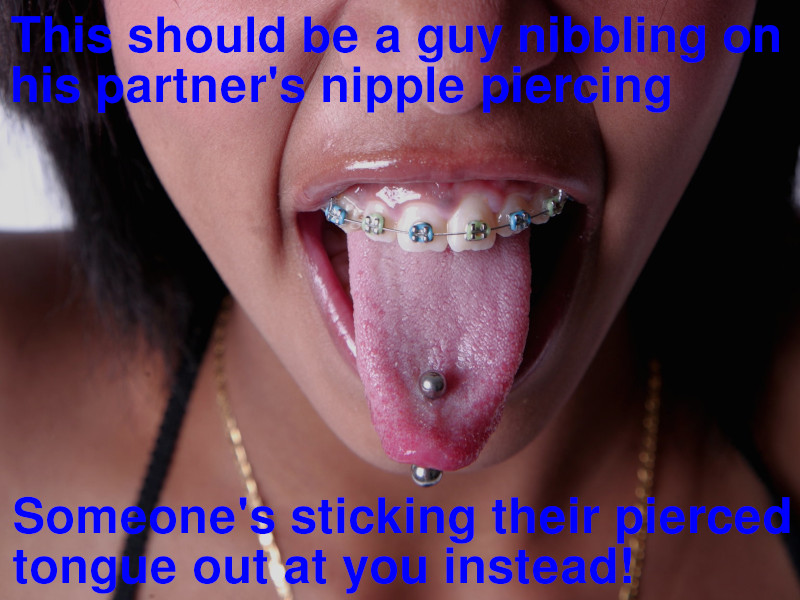This is the censored version of this post on having sex with women, transmasc and AFAB people. You can view its uncensored version with sexually explicit (NSFW) photos on Pillowfort.
This is part 2 of a four-part miniseries on how to have sex with women, transmasc and AFAB folks. You can find part 1 here. In this second part, we’ll go over all the ways the bodies of cis women, trans women, trans men and other AFAB people are wired for pleasure.
Sexy spots to explore when you have sex with women, transmasc and AFAB folks
Bodies have many sensitive areas that give out pleasurable, erotic sensations when they’re stroked, kissed, tongued, or played with in other ways. The clinical term for those is erogenous zones. Each person’s body is different. An area that drives one partner nuts could be meh for another person. So areas you can explore with a partner are the:
- ears;
- eyelids, forehead, and cheeks;
- mouth and lips;u2014
- neck, nape, and collarbone;
- nipples, but also the centre of the chest;
- stomach;
- wrists;
- upper and lower back;
- inner thighs;
- the vulva itself (and not just the clitoris and vagina);
- back of knees;
- and feet.
[Drawings of a nude person and their erogenous zones]
In short, playing with any of these areas can make your partner feel really good and turned on. This is true whether you’re just making out, or have more fun that’s more genital on the mind.
What vulvas look like

No two vulvas are alike. First, they vary in colour and shape. Then some people have long inner lips—the clinical term is labia minora—and some others have short ones. Likewise, the head of the clit is sometimes obvious; at other times it’s discreet. At last, people have different grooming styles too.
[A drawing showing the names of various parts of a vulva]
A lot of vulva owners have never taken a good look at their junk, and many feel self-conscious about it. If you have that equipment yourself and you’ve never done so, grab a small mirror. Take the time to examine your body, when it’s not dysphoric for you. It’s your body, and considering the pleasure this part of your body can give you, you should get to know it well. When a partner seems uncomfortable with their own vulva, give them positive messages about it. Then when you’re both comfortable with each other, you can maybe offer to grab that mirror, and take a look together also—if your partner wants to, that is.
Likewise, when you lack a vulva yourself and have never taken a good look at one in the flesh, there is no shame in letting your partner know. Ask politely to take a good look, if just to know your way around. Maybe you can even request the guided tour!
The clit, an important part during sex with women, transmasc and AFAB folks
Once you’re trying to get each other off though, the clitoris is where it’s at. The clit exists to give sexual pleasure, and most of the physical pleasure their owner gets from genital sex comes from it. Most of the time, orgasms happen from stimulating the clit.
[A drawing of the parts of the internal clitoris, and how large it is]
What you might not know is that the clitoris is mainly an internal organ. What most people call the clit—the bud under the clitoral hood at the top of the vulva – is actually its head, or glans. But while you can play with it, it’s extremely sensitive, and a lot of people prefer to have it stimulated indirectly, through the hood, for example.
The glans is just the tip of the iceberg, though: 90% of the clit is inside the body, below the surface of the vulva, and it surrounds the sides of the vagina’s entrance as well as its top. The clitoris fills up with blood—like a sponge—and it swells up when its owner gets turned on, like the penis does when a boner happens.
Vaginas: A-spots, G-spots, and hymens
[A drawing showing where you can find the G-spot]
For most people, the portion near the vagina’s entrance is the most sensitive part, because the internal clit surrounds it. A lot of the sexual pleasure from any form of vaginal penetration comes from there. When you push up towards the navel a couple of inches inside the vagina, though, you can start stimulating what people call the G-spot. You can usually feel it when its owner is aroused and you make a “come hither” motion with your fingers—there will be an engorged spot.
Yet there’s a debate on whether the G-spot is just a part of the internal clitoris or its own thing. Still, it’s a definite feel-good spot for a lot of people, though some don’t care much about it.
[A drawing who shows you where to find the A-spot, or anterior fornix]
Another sensitive and pleasurable spot in the front hole is one most people have never heard about: the anterior fornix, or AFE. This strands for Anterior Fornix Erogenous zone—exciting term, right? People who know about it and play with it call it the A-spot, or deep spot. Still, most people who have one don’t know it’s there. It’s at the deep end of the canal, between the cervix and the end of the vagina, on the face of the vagina that’s towards the front of the body—towards the bladder and pubic bone.
When someone has their AFE stimulated by accident, they can think it’s the G-spot if they’ve never heard of the fornix. Yet people who are used to both sensations say they’re different. Also, stimulating the A-spot sometimes causes a lot of lubrication quite fast.
Hymens and so-called virginity
[Drawings of hymens and different ways they can look like]
Vaginas are about 7.5 cm long on average – smaller than the average penis – but they’re very stretchy both in length and width. Being turned on is important to help the canal expand in a way that’s comfortable for its owner. Also, people with a vagina are born with a protective skin called the hymen near its entrance. Hymens have openings to let blood flow during menstruation, and their appearance varies. Some are very elastic; others not so much.
Hymens can break the first time someone puts something inside the front hole, but not always. Some hymens are just stretchy and return to normal after penetration. Sometimes there’s only a little bit of tearing that heals. Hymens can break for different reasons, like sports and physical activity, gynecological exams, inserting a tampon, or masturbating with fingers. Because of this, many people who have never penetrated their front hole don’t have a hymen anymore, just like some people who have done vaginal penetration many times still have theirs.
Breaking a hymen can make it bleed, but it often won’t when that happens. There can also be just a little bit of pain when it breaks, a lot, or none. Here are things that make penetration when there’s an hymen much easier for its owner:
- being relaxed, trusting your partner;
- being very sexually aroused and well lubricated;
- starting penetration slowly and gently to give the hymen time to stretch;
- communicating well between partners to make sure the experience is as comfortable as possible.
Sex with women, transmasc and AFAB folks: fluids and orgasms

For many people who own a clit, getting aroused sexually and reaching orgasm takes longer than for most people with a d**k. Keep that in mind when you have sex and you’re thinking of putting something in your partner’s front hole, or your own. Vaginas self-lubricate, making what’s called vaginal fluids—they worked hard on naming those. Yet many people need to be turned on for a while to get enough lubrication for easy penetration. Some folks lubricate faster or in larger quantity than others.
The same goes for orgasms. A lot of people need their clitoris stimulated one way or the other to come. It often takes longer and more sustained stimulation to get there than for a penis owner. Some people orgasm quickly, though, or even without any stimulation of the clit. There’s often more liquid when someone with a front hole orgasms and for some people, there’s a form of ejaculation that happens—that’s what many call “squirting.” A lot of liquid can come out, so put down a towel when orgasms will be on the menu.
While d**k owners have a period of time after ejaculating during which they can’t orgasm again, many people with a clit can have multiple orgasms in a row. Yet for some people, the clitoris gets too sensitive after an orgasm for that to happen right away. Also, most folks with a clit describe their orgasms more as a full-body experience, unlike penis owners, for whom the sensations are more focused on the genitals.
What’s different for a trans or nonbinary person in their medical transition
Folks who were assigned female at birth

An AFAB partner could be on hormone replacement therapy to make their body more masculine. When that’s the case, they will be taking testosterone—T for short—regularly, and this changes a number of things. HRT impacts each person differently, though. T will make their d**k—what was a clitoris at birth—grow more obvious. Their front hole will often make less lubrication too. How their erogenous zones and orgasms work will often be different than how they would for someone who isn’t on HRT. As always, communicate well to know what works and what doesn’t work for your partner, and how the two of you can best enjoy having sex with each other.
We see much fewer AFAB people get phalloplasty or metoidoplasty—phallo and meta for short—than AMAB folks getting gender-affirming surgery to their genitals, because phallo and meta give results than only some people seek. A guy here has documented his meta with photos [full-frontal nudity and images of his erect penis]. Most AFAB folks who transition don’t go through genital gender-affirmation surgery. When they did, though, they will be the best person to explain how their penis works, as each person makes different choices for what functions of their penis to prioritize as a final result.
Folks who were assigned male at birth
Likewise, an AMAB partner could be taking estrogen through HRT, but they might not have had genital gender-affirming surgery.
When that’s the case, expect differences in the feel and texture of their penis and erections. Their ejaculate will often have a different consistency too: it will be clearer, and their penis might shoot it with less force. Your partner might be able to use their penis for penetration, but this isn’t always easy or pleasant because of how the sensitivity and erections of the penis change – or it could be dysphoric. As with someone on T, their erogenous zones and levels of sensitivity also change. Everyone reacts differently to HRT so once again, communicate with your partner, and ask what works and what doesn’t.
When someone has had vaginoplasty, most of the time others will find it difficult to tell their genitals apart from those of a cisgender woman. A person who’s had vaginoplasty has to relearn how sex works for them. Most people can orgasm and lubricate though—sometimes with ease, sometimes through more work. Some people can’t, though. Like always, communicate well with your partner. Have extra lube on hand also when the two of you plan to do vaginal penetration of any kind.

Menstruation and period sex
Uterus owners menstruate, although some contraception methods, HRT, or menopause—when they are older—can prevent that. Everyone feels differently about menstruation and period sex. Some people avoid period sex [comic showing drawings of genitals and people having sex]. There are others who don’t mind. Some people love period sex—they feel particularly turned on and sensitive during their period, while others aren’t at all. Period sex has benefits in terms of making menstruation easier to go through.
Still, respect each other’s comfort zones in that regard, although I would encourage you to work on your views of menstruation if it grosses you out—unless it’s dysphoric to you, of course. That regular flow of blood, and of uterine wall remains of a uterine wall that was ready to conceive, is a normal part of life for uterus owners. Be considerate too of a partner who is menstruating at the moment, as they could be experiencing a lot of physical discomfort, sometimes even pain.
When you have period sex, have a towel on hand that you don’t mind staining, to prevent stains on bedding and other furniture. Mind the increased risk of transmitting blood-borne STIs like HIV too. Using a dental dam for cunnilingus during period sex is a good idea when a partner’s health status is unclear or that person has a known infection. Dams and condoms are also handy when you’d rather just not have close contact with menstrual flow. Finally, although conception is less likely during someone’s period, it is possible still, because sperms can survive up to a week inside someone’s body. So don’t ditch contraception.
Is it big enough? A common worry for sex with women, transmasc and AFAB people

Since we’re talking about body parts, this feels like the right time to talk about penis size. Many guys worry about the size of their d**k . . . and yours is fine. People rarely list penis size as one of the most important things in whether they enjoy sex or not. Good communication, complicity, and having a partner who’s eager to give pleasure—these are all named as far more important things in having great sex.
Penis plus vagina doesn’t equal instant ecstasy. Pleasure doesn’t happen by magic; everyone involved needs to figure it out together. Also, I’ve worked in a sex shop: I can tell you most cis women I’ve seen shopping for a dildo or a vibrator ended up choosing something smaller than the average penis. The average erect penis size for an adult is 13 cm in length and 11.5 cm in girth.
Size can matter, though
Don’t get me wrong: penis size can sometimes make penetration difficult or impossible. This depends too on the body of the person who wants to take the d**k. That can be true of a penis that is much smaller than average—whether its owner was born with it, grew it using T, or got it through metoidoplasty—but that can also be true of a larger than average c**k. Most people would be nervous at the prospect of putting a porn-sized d**k inside their body. That being said, vaginas start small and stretch as needed, within limits.
There’s the matter of preference too. Some people are size queens. Some others prefer a d**k that’s easy to put inside them. So yes, some partners could end up wishing that your c**k had a different size. But it’s rare that all sex acts will work as well as they could with a partner, and sometimes that act ends up being penetration. So focus on the stuff that works and makes you both feel wonderful – and toys are an option when one of the partners prefers something smaller or bigger.
Most of your partners will love you and your d**k for who you are, though, because they can use it to make you feel amazing—and in many cases, your d**k will give them awesome feelings too—and because you’re the person attached to it. They’re not making love with a c**k, they’re making love with you.
In this part, we’ve talked about the ways people’s bodies are. In the next part, we’ll talk about many fun things we can do with those bodies, from fingering to using toys to going down on someone. See you for part 3!








